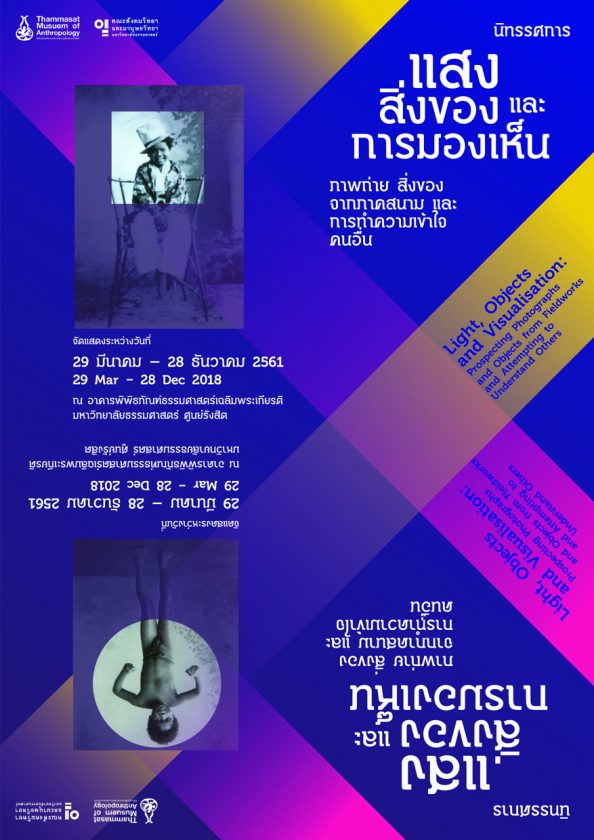Source: http://socanth.tu.ac.th/news/exhibition-tu-museum/

The Faculty of Sociology and Anthropology, Thammasat University, issued an open invitation to visit an exhibition, “Light, Objects and Perception: Photographs – Objects from Fieldwork and the Understanding of Others”, held between 29 March – 28 December 2018 at the Thammasat Museum of Anthropology Building, Faculty of Sociology and Anthropology, Thammasat University, Rangsit Campus.
Fundamentally, humans perceive and interpret the world through their own eyes. “Seeing comes before words. The child looks and recognizes before it can speak” (John Berger, Ways of Seeing, 1973). Anthropologists and sociologists are no exception. They all use their “eyes” to view and understand the world of Others (Ocularcentrism); integral to this is Participant Observation – a method of gathering knowledge through engaging in fieldwork to understand “Others.”
In order to see, know and remember, “light” is indispensable to humans.
Different cultures in the world also define light as a source of knowledge and wisdom. The metaphor of Socrates’ cave story tells of a slave who unbinds the chain that kept him in the cave and walks out to see sunlight through his own eyes. That action is an act of perceiving the real world. The importance of lightness was also echoed in the naming of the Age of Enlightenment in the 18th Century; it was a time of light and reason (le Siècle des Lumières) replacing the Dark Ages.
In Buddhism, darkness is ignorance and lightness is wisdom. “Seeing” a corpse, if viewed with wisdom, can be “seeing with greatness” because the “eyes-see-Dhamma.” In Hinduism, besides placing importance on light, “watching-loyally” deities like Nandi ̶ a bull sculpture who watches Shiva from the gate of a holy place ̶ is an act that will be blessed by the gods.
In order to present evidence for understanding others, anthropologists and sociologists use “words” or “writing”, in other words, an “Ethnography” (from graphy – Greek for writing) about others (Ethno). However, one of the most important criticisms is that “this writing about others” only represents a partial truth.
With the popularity of cameras, anthropologists and sociologists started to use photography (Photo-graphy) to record information and expand their understanding. Etymologically, photography means writing (graphy) with light (photo – in Greek means light). So, in the same manner as writing, is photography only a record of a partial truth?
If human eyes only perceive part of the “truth,” with such limited sight, how much can we fully “understand”?
The exhibition of “Light, Objects and Perception: Photographs –Objects from Fieldwork and the Understanding of Others” is divided into three displays, interconnected by one concept, which is how does the “perception” of objects help us to understand others.
